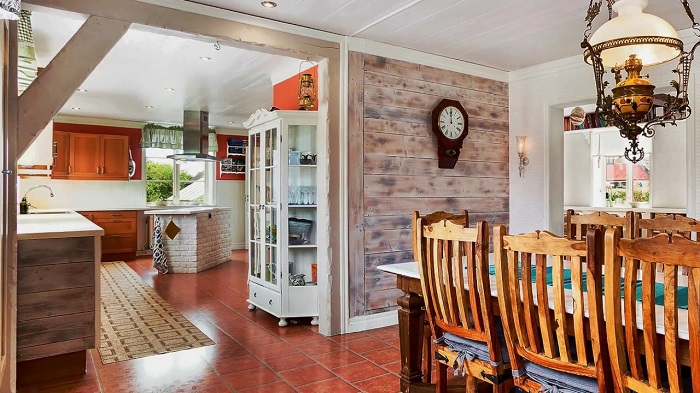Though it has been a common material used in woodworking projects for centuries–often as a matter of necessity–reclaimed wood is undergoing something of a resurgence. As trends rise and fall and are reborn, the addition of new influences helps guide the rebirth. Reclaimed wood offers a number of benefits for both the modern woodworker as well as the old-schooler–though, it is important to understand what exactly you are getting yourself into when choosing to use reclaimed wood for your woodworking project. When making table or miter saw cuts older wood can split and not cut as smoothly.
Its Benefits:-
The benefits of reclaimed wood are manifold and diverse and often focus on the most important characteristics when selecting wood for a woodworking project. Some of the more notable benefits of using reclaimed wood for your woodworking projects include: sustainability, aesthetic, and quality. Moreover, many of these qualities actually complement one another due to the demands of the timber industry.
Sustainability:-
The planet only has so many finite resources. With a New York state sized chunk of the Amazon cut down every day, there will surely be an end to affordable lumber at some point in the future. For those eco-conscious individuals, using reclaimed wood can be one step in doing their part to living a more sustainable life and reducing one’s carbon footprint.
Quality:-
As mentioned, the demand for lumber is so great that it cuts down whole swaths of forests and jungle every day. In an effort to keep up with that growing demand, numerous tree farms have sprouted up. Unfortunately, those commercial tree farms rarely allow the tree to mature before they are harvested. This means that the wood is often not as strong nor can it be made into as large of pieces of lumber.
Aesthetic:-
Arguably one of the biggest reasons for reclaimed wood’s rise in popularity is due to its peculiar aesthetic. Favoring an untreated and weather-beaten look, reclaimed wood has a distinctive appearance all on its own that sets it apart from virtually every other type of lumber available–including pre-stressed lumber. In fact, reclaimed wood is almost required for certain styles of furniture, houses, and other woodworking projects.
Drawbacks:-
Despite the many benefits of reclaimed wood, nothing is perfect. Even reclaimed wood comes with a few faults, though they may not be as important depending on your woodworking project and personal situation. The drawbacks of using reclaimed wood often fall into a few categories: price, conformity, quality.
Price:-
It may seem odd that using wood which has already been purchased would actually be more expensive. From recycled glass to paper to plastic, we often assume that recycled materials are just supposed to be less expensive than newly manufactured ones. Unfortunately, reclaimed wood requires a significant investment of time and labor. Unless you are literally reclaiming the wood yourself, it often ends up costing more to use reclaimed wood than virgin wood.
Conformity:-
While reclaimed wood is ideal for certain rustic styles or those that explicitly seek asymmetry as part of their design, it fares far worse for woodworking projects where the conformity and regularity of the workpieces are paramount. If your woodworking project requires precision beyond 1/16”, chances are you will either not want to use reclaimed wood or will spend more time than it is worth carefully selecting each specific workpiece.
Quality:-
Because reclaimed wood has already been used and often endured the elements for years at a time, it can have underlying issues with its quality. In this regard, reclaimed wood can either be one of the best, strongest woods available or it can harbour a secret flaw waiting to snap under the pressure of working with it. This issue is only compounded when you consider what fasteners may lie within the wood which could ruin your tools.
Conclusion:–
Reclaimed wood holds a number of exciting possibilities for those woodworkers who are skilled and diligent enough to properly work with it. While it may take a bit more time, care, and investment, reclaimed wood can give a project a unique quality that can otherwise not be replicated from manufacturing processes alone. Just be sure you are skilled and prepared to deal with its various quirks and nuances ahead of time.















